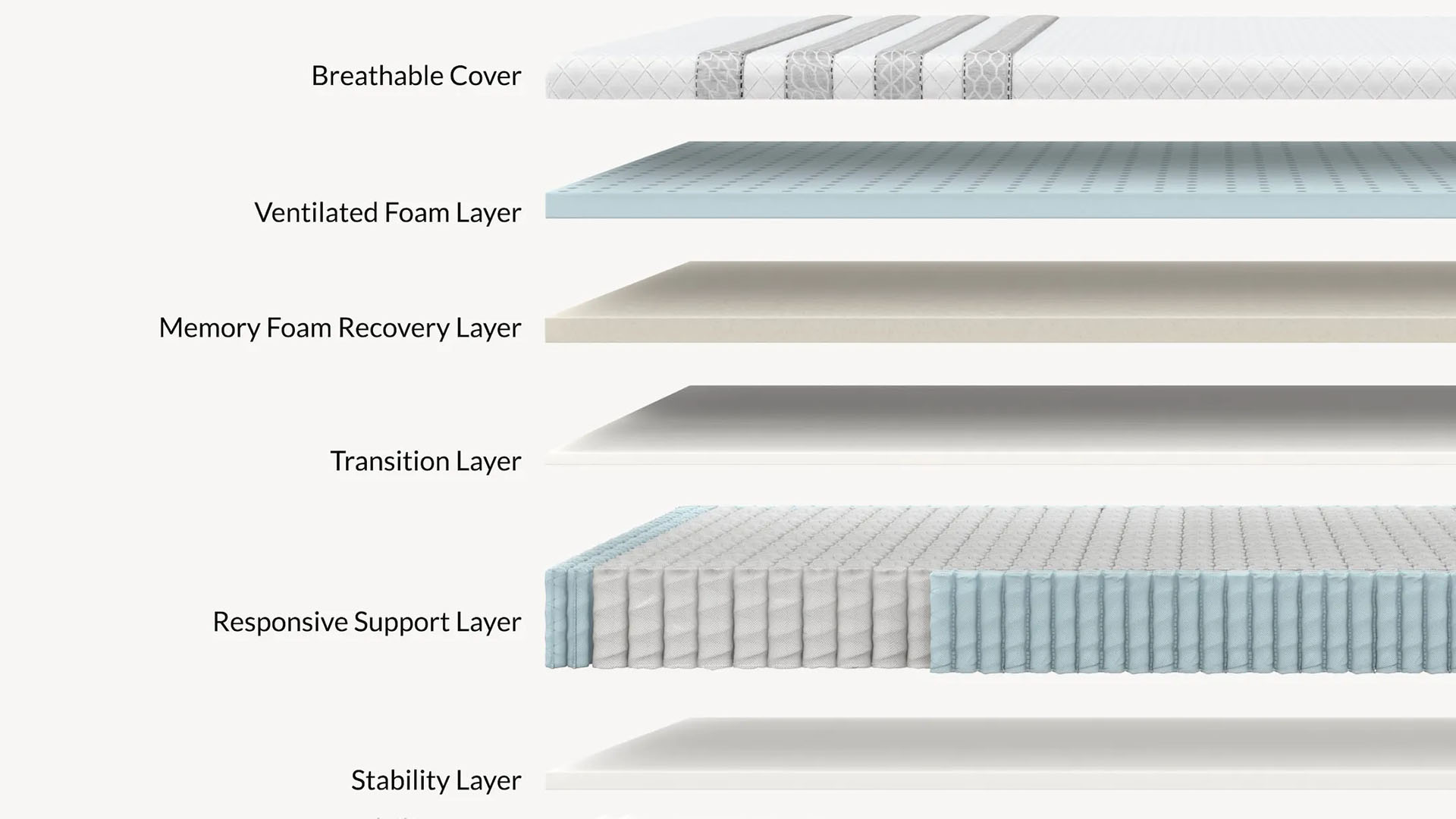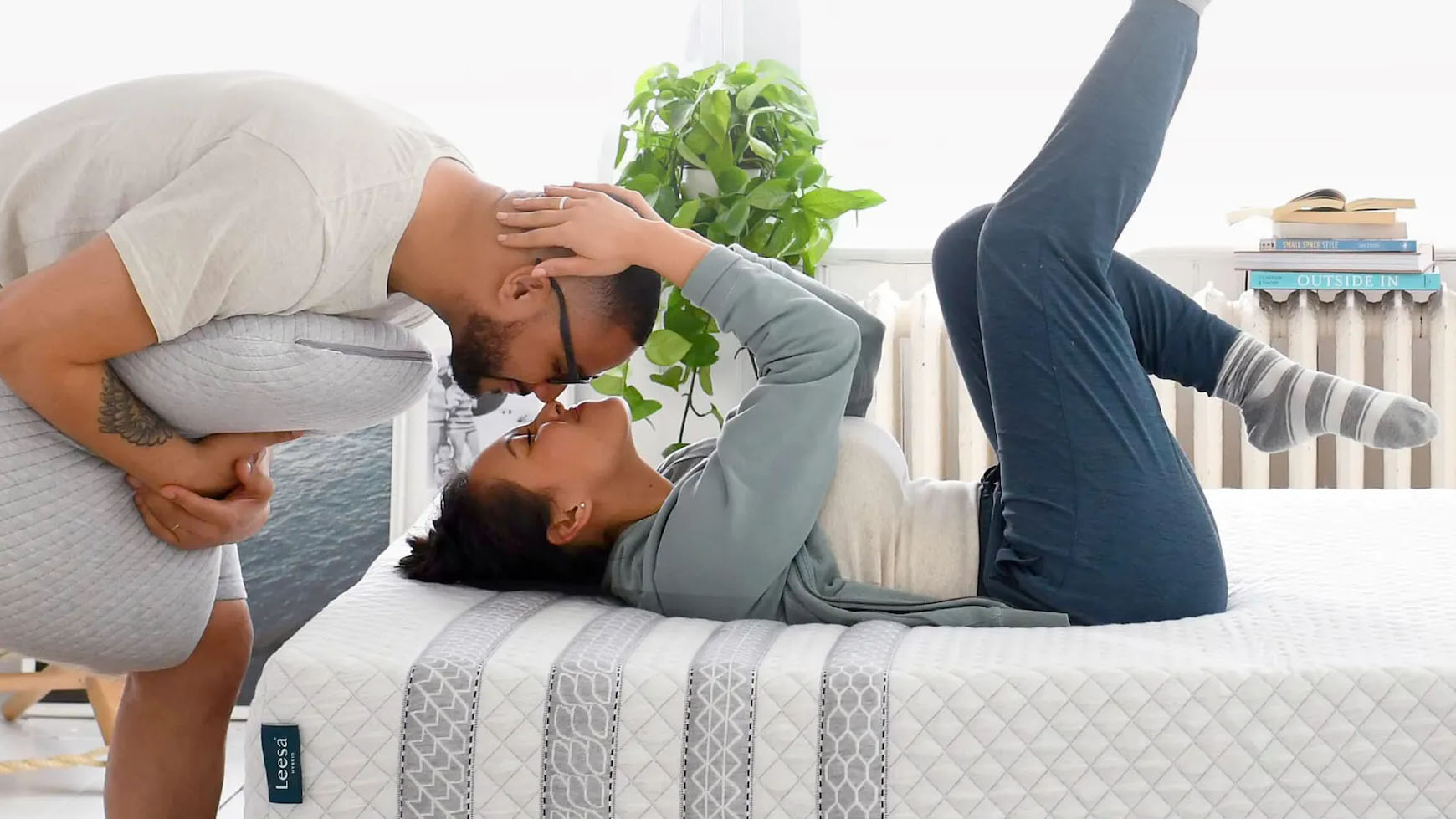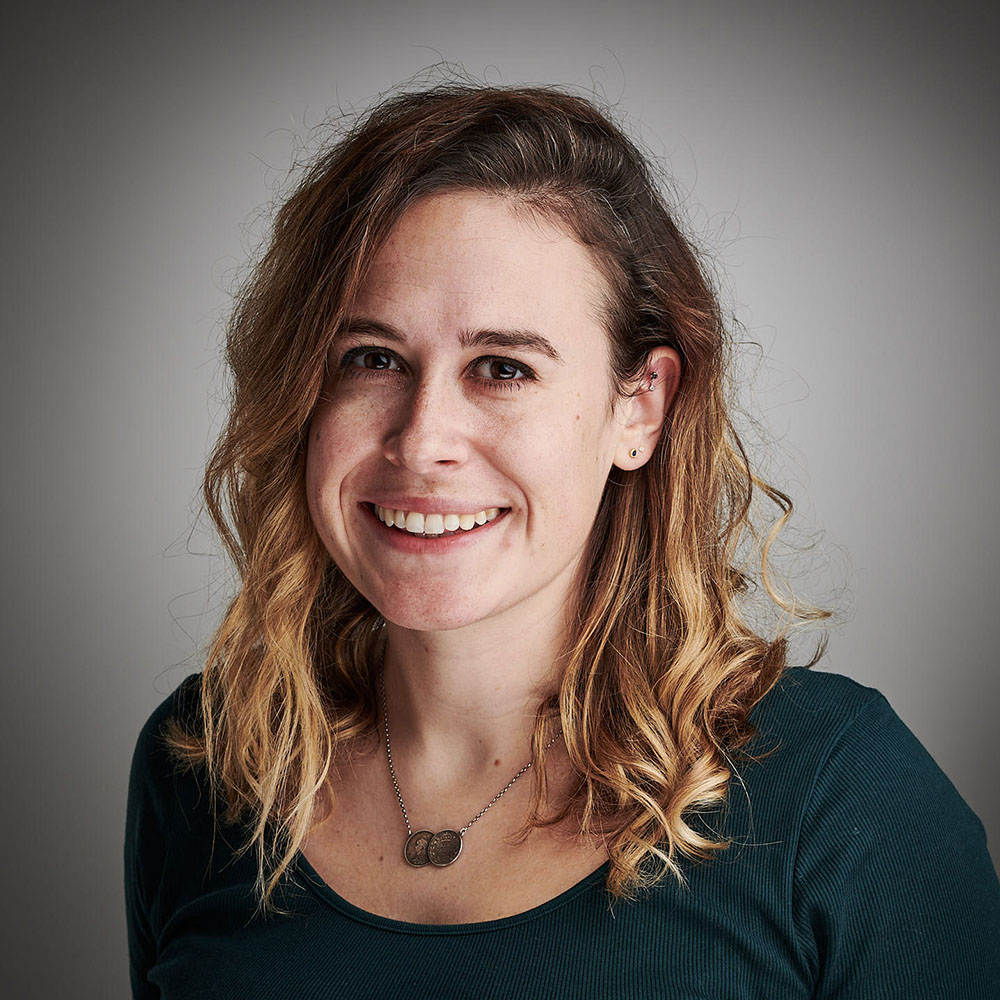Is the Leesa Sapira mattress any good?
We went hands-on with the luxurious Leesa Sapira – here's what we discovered

Update: We've tested this mattress properly. Head to our full Leesa Sapira Hybrid mattress review to get the full low-down.
The Leesa Sapira is this Phoenix-based brand's bestseller. This hybrid mattress combines layers of springs and foams, offers a medium to medium-firm feel and comes with a premium price tag. During a visit to Leesa's factory and showroom, we had a chance to check it out. While we weren't able to sleep on it (although we have a full review in the works, so watch this space for that!), we were able to inspect it, lie down on it, and run our usual review tests to measure pressure relief, motion transfer, and edge support.
Type: Hybrid
Firmness (1-10): 5-7
Height: 11 inches
Trial period: 100 nights
Warranty: 10 years
Price bracket: Premium
Materials: Memory foam, coils, other foams
The Sapira is the middle option (price-wise) of three hybrid models from this brand. There are also two all-foam mattresses in the range: the flagship model (which you can read about in our Leesa Original mattress review) and a more budget-friendly option (more info in our Leesa Studio hands-on review).
So who might suit the Leesa Sapira mattress? And how does it compare to the rest of today's best mattresses or best hybrid mattress models? Here's our hands-on review.
Should I buy the Leesa Sapira mattress?
You'll find an in-depth look at the Leesa Sapira below, including the results to all our tests. If you're pressed for time and just want the short version, here's who we would, and would not, recommend this mattress to:
Buy it if...
✅ You want to invest in a top-quality mattress that will last: The Leesa Sapira is a premium priced mattress, but it uses top-quality materials to help justify that. The two upper comfort layers are made from 3lb and 4lb foams – both are dense, expensive, high-end foams that are engineered to last and not lose their shape (our foam density guide explains further).
✅ You share a bed: The Sapira offers good motion isolation, with the sleep surface absorbing movements rather than letting them reverberate. For that reason, it'll be fine for those who share a bed (even if your partner is a restless sleeper).
Get instant access to breaking news, the hottest reviews, great deals and helpful tips.
✅ You're a lightweight side sleeper: The Studio has a medium sleep feel that will be best suited to those who like to sleep on their sides. This mattress should flex comfortably around the shoulders, preventing pressure from building up in this position.
Don't buy it if...
❌ You want the best value for money: The Sapira is a premium-priced mattress, and while we were impressed with it and would always recommend investing in the best model you can afford, there are arguably mattresses that offer better value for money when it comes to extras. A number of brands (Saatva, Nectar, DreamCloud) give you a full year's sleep trial and forever warranty (compared to 100 nights and 10 years from Leesa).
❌ You want to be able to pick your firmness preference: Most of today's best luxury mattresses are available in a few different firmness options, to let you pick the one that appeals to you and suits your sleep style. The Sapira is only available in one sleep feel, with no customization options.
❌ You want lots of body contouring: This mattress contours slightly to the sleeper's body, but overall the feel is bouncier and more responsive than this brand's two all-foam models – both the Leesa Original and Leesa Studio) have that ultra slow-moving, sink-in foam feel.
Leesa Sapira mattress: Price
- Premium priced mattress
- Regular tiered discounts knock up to $400 off MSRP
- Extras are not especially generous
The Leesa Sapira sits in the premium price bracket. You usually won't have to pay MSRP – almost constant deals knock between $150 and $400 off, with bigger discounts on the larger, more expensive sizes. Those mattress sales make the Sapira more wallet-friendly, but it's still a premium priced mattress. There are usually pillows bundled in for free with your mattress purchase, and you'll also get free, no-contact delivery, a 100-night trial and 10-year warranty. We'll get into those more in the Delivery section of this hands-on review, but none of that is especially generous.
Here's a look at the list prices for each size of the Leesa Sapira, and how much you can expect to actually pay:
- Twin size: MSRP $1,349 (usually on sale for $1,199)
- Full size: MSRP $1,699 (usually on sale for $1,499)
- Queen size: MSRP $1,999 (usually on sale for $1,699)
- King size: MSRP $2,299 (usually on sale for $1,899)
Our best luxury mattress guide covers our favorite models in the same price bracket. It's roughly in line with our #1 rated model, the Saatva Classic – that one comes with a much more generous extras (365-night trial, forever warranty, free white glove delivery), and be customized to your sleep preferences. Overall, it's hard not to argue that the Saatva offers better value for money.
If you're hoping to snag a better discount, your best bet is to shop during the sales events that accompany major holidays. The Black Friday mattress deals at the end of November traditionally offer the lowest prices of the year, but you'll can also find some good deals in the Memorial Day mattress sales, 4th of July mattress sales and Presidents' Day mattress sales.
Leesa Sapira mattress: Design
- 100-inch tall, hybrid mattress with springs and foams
- Comfort foams used are very high quality, durable and dense
The Leesa Sapira is a 11-inch tall hybrid mattress made up of layers of different foams and coils. At the top you'll find a knit cover made from viscose and plant-based rayon, designed to wick away moisture. Most of Leesa's beds have distinctively patterned covers, and the Sapira is no exception – the fabric has a subtle diamond design, with soft gray strips along the bottom third.
Beneath that are three layers of different types of foam. The uppermost foam layer in the Sapira is a 3lb soft comfort foam, with perforations to encourage airflow. That's followed by 4lb squishy memory foam for pressure relief. Finally there's a 2lb transition layer, mainly to form a barrier between the foams and the coil layer, which is next.

The Sapira has 1,000+ pocket springs. These should boost support, allow air to move through the mattress, and absorb movements. Leesa has used sturdier coils around the perimeter to boost edge support. The coils sit on top of a sturdy 1.8lb base foam layer.
We're pleased to see that Leesa has published the foam density for each – this is an indicator of quality and durability, but most brands don't publish the info. 3lb or 4lb foam (used in the two uppermost layers of this mattress) is very high quality, expensive foam. The transition layers are lower density, which makes sense as they are mainly there for structural reasons, and won't impact on the sleep feel – it would be a massive waste of money to use a super-dense foam for these layers. All the foams are CertiPUR-US certified, which means they meet certain minimum health and environmental standards.
Leesa Sapira mattress: Comfort & support
- Medium to medium-soft mattress, only one firmness option
- Some light contouring but overall relatively responsive
- Distributes weight well, but perhaps too soft for >230lb people
Lying on the Leesa Sapira, you get a bit of that traditional memory foam contouring but not tons. The surface is relatively responsive – meaning it springs back into shape pretty quickly when pressure is removed – with a little bounce from the coil layer. . This is in sharp contrast to this brand's all-foam models, the Original and Studio, both of which have a very slow-moving, sink-in feel.
Leesa uses customer reviews to provide a firmness rating, and based on that has judged this to be around a 6 or 7 out of 10. (That's apparently based on over 20,000 reviews, but there are only 2,000 reviews for this model on the Leesa website, but we're not entirely sure how that math works.)

When we tested the firmness out by placing a 15lb weight on the mattress, it sank in 2.7 inches, which puts this mattress in the 'medium-soft' bracket. As a rule, we'd say that level of plushness is only really suitable for lightweight side sleepers, as back / stomach sleepers or anyone heavier will not get the support they need.
However, to lie on we found that this mattress actually did a great job of distributing body weight evenly, and we were comfortable lying in any position (albeit only for the relatively short period we had available to try this mattress out for).
Leesa Sapira mattress: Motion isolation
Motion isolation refers to how well the mattress absorbs movements on the surface of the bed. We tested this out by placing an empty wine glass in the centre of the mattress, then dropping a 15lb weight at various distances away from it. The glass wobbled slightly 25 inches away, and wobbled a little more substantially at 4 and 10 inches, but never fell. This is a strong result.
We also mimicked a 'real world' scenario by asking a fellow sleep writer to lie on the mattress next to us, change position and climb in and out of bed. We agreed the motion isolation was excellent – there was tiny bit of transfer, but negligible. For that reason, we'd say this mattress is suitable for light sleepers who share a bed, or generally restless sleepers.

Leesa Sapira mattress: Edge support
A mattress with weak edge support will be softer around the perimeter, meaning if you lie or sit near the edges, you might feel in unsupported and in danger of rolling off.
We tested this on the Leesa Sapira by placing our 15lb weight on the edge of the mattress. It sank in 2.5 inches, which is slightly less than the sinkage in the centre (2.7 inches). That's a good result –usually, we'd look for the same amount of sinkage in the centre and edges (on a firmer mattress) or less sinkage on the edges (on a medium or soft mattress).
However, when sitting on the edge of the mattress, we found the edges felt a little unsupportive. That's perhaps due to it being a softer overall sleep surface. Note, it was fine to lie on though, with body weight more evenly distributed.

Leesa Sapira mattress: Delivery & extras
Like all of Leesa's mattresses, the Sapira comes with a 100-night sleep trial. That's about the minimum trial length you'll get from any major bed brand, and not terribly generous given the premium price tag.
As with all the best bed in a box mattresses, the Studio comes vacuum packed and rolled into a conveniently proportioned box. Delivery to your doorstep is included in the price, or you can pay for in-home setup (we'd recommend adding this if you don't have someone to help you maneuver the box into place, because just because it's smaller doesn't mean it's any less heavy!). The warranty is 10 years, which again isn't super generous, but realistically, you should be replacing your mattress every 7-10 years anyway.

Ruth is currently Homes Editor on Tom's Guide's sister site TechRadar, where she reviews and writes about everything from air fryers to vacuum cleaners to coffee machines, as well as the latest smart home gadgets. Prior to making the shift to Homes, Ruth was Tom's Guide's Sleep Editor. A certified Sleep Science Coach, she has tested more mattresses than her small flat can handle and will talk at length about them to anyone who shows even a passing interest.
